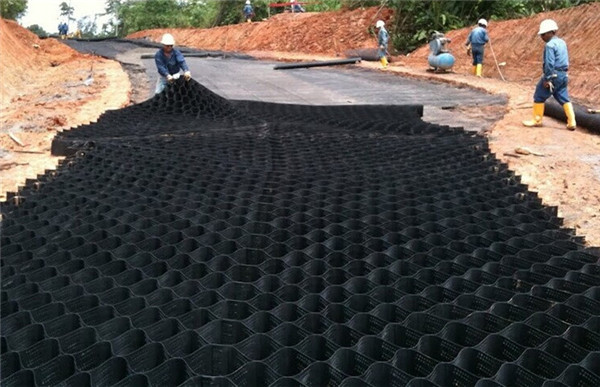close
Choose Your Site
Global
Social Media
Views: 0 Author: Site Editor Publish Time: 2023-08-16 Origin: Site








Geocell, also known as cellular confinement system, is a revolutionary technology that is transforming various industries. With its unique design and structure, geocell offers a wide range of benefits and applications, making it an essential tool for engineers and professionals in civil engineering, construction, and environmental industries.
One of the key benefits of geocell is its ability to enhance soil stability and prevent erosion. By confining soil within its three-dimensional honeycomb structure, geocell provides a strong and stable base for roads, embankments, and slopes. This prevents soil displacement and erosion caused by rainfall and high traffic loads, ensuring the longevity and safety of infrastructure projects.
Another advantage of geocell is its ability to improve load distribution. The interconnected cells of geocell distribute the load applied on the surface evenly, reducing stress on the underlying soil. This not only increases the load-bearing capacity of the soil but also minimizes settlement and deformation. As a result, geocell is commonly used in the construction of roads, parking lots, and airport runways to improve their durability and performance.
In addition to soil stabilization and load distribution, geocell also offers environmental benefits. The three-dimensional structure of geocell allows for the effective drainage of stormwater, reducing the risk of flooding and waterlogging. This helps to protect the surrounding ecosystem and prevent water-related damages to infrastructure.
Geocell is also a sustainable solution as it allows for the use of locally available and recycled materials as infill. This reduces the need for virgin materials and minimizes the carbon footprint of construction projects. Additionally, geocell can be easily dismantled and reused, making it a cost-effective and eco-friendly option for temporary applications.
Geocell is a revolutionary technology that has found numerous applications across various industries. This innovative product is made from high-density polyethylene (HDPE) and is designed to provide reinforcement and stabilization to soil, making it an essential solution for civil engineering projects.
One of the primary applications of geocell is in road construction. By incorporating geocell into the base layers of roads, it helps to distribute the load and prevent soil erosion. This results in a more durable and long-lasting road surface, reducing the need for frequent repairs and maintenance. Furthermore, geocell improves the load-bearing capacity of the road, allowing it to withstand heavy traffic and adverse weather conditions.
Another significant application of geocell is in slope protection and erosion control. When installed on slopes, geocell reduces the risk of soil erosion and landslides. It provides a stable and secure platform for vegetation to grow, preventing further erosion and enhancing the overall stability of the slope. This is particularly beneficial in areas prone to heavy rainfall or where the landscape is naturally steep.
Geocell is also widely used in the construction of retaining walls. By incorporating geocell into the backfill material, it enhances the stability and strength of the wall. The interlocking honeycomb structure of geocell provides lateral support, preventing the soil from spreading and ensuring the structural integrity of the wall. This application is especially valuable in areas with poor soil conditions or where the retaining wall is subject to high loads.
In addition to its applications in civil engineering, geocell has found uses in environmental projects as well. It is commonly used in landfills to create a stable base for waste disposal. By using geocell, the load is distributed evenly, minimizing the risk of differential settlement and ensuring the long-term integrity of the landfill. Geocell also facilitates the construction of green roofs, providing a lightweight and efficient solution for creating rooftop gardens and improving urban sustainability.
Geocell is a technology that offers numerous benefits in civil engineering and construction projects. It provides soil stabilization, load distribution, and environmental sustainability. Geocell is versatile, cost-effective, and enhances the performance and longevity of infrastructure projects. It is widely preferred by engineers and contractors. This technology improves soil stability, distributes loads evenly, and promotes sustainable practices. Geocell has revolutionized the field of civil engineering with its applications in road construction, slope protection, retaining walls, and environmental projects. It enhances stability, durability, and sustainability in these areas. With its unique properties and advantages, geocell continues to be a valuable asset in the construction industry, offering innovative solutions for various engineering challenges.